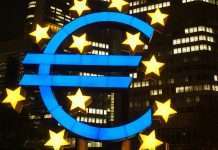Regnology believes that ESG should be at the centre of a company’s activities, from finance to risk departments and credit ratings. A good ESG data strategy is key to this.
What is the current status of ESG reporting?
The industry is currently in a “market frenzy” when it comes to ESG and data reporting. That’s according to Bodo Windmöller, senior vice president product management at Regnology.
“More than 30 regulatory bodies and standard setters in 12 markets have undertaken some sort of official consultation on ESG. We are seeing a lot of buzzwords flying around and it’s a bit overwhelming to make sense of the flood of new mandates and proposals.”
A good place to begin is to consider the objectives of ESG reporting. As it currently stands, the majority of proposals in this area are looking to enable transparency, but Windmöller said that some are beginning to go further than this and looking to create a behaviour change and influence market dynamics. This is a particularly prominent trend in the EU.
In terms of the stringency of compliance requirements, the EU is leading, Windmöller said, this area is somewhat weaker in the US and Canada. Turning to the uniformity of ESG reporting, Windmöller continued, the EU is following a “template-based” approach that is seen in other reporting areas.
Materiality and the divergence of standards
Materiality is a particularly hot topic in the ESG data reporting space. In the context of ESG, this refers to the effectiveness and financial significance of a specific measure as part of a company’s overall ESG analysis. Companies and governments must determine what ESG issues are significant for their organisation and how those impact the business.
This is not the only area in which ESG reporting varies. There is also the question of the outside-in perspective versus the inside-out perspective, also referred to as single and double materiality. Windmöller explained this issue essentially asks: is it a case of reporting how changes in the environment will affect certain companies or how certain companies affect changes in the environment?
“There is a huge variety in what ESG comprises. Some regulation concentrates on the E side, others look at the S and G elements,” Windmöller said. Even just considering the E side, there is disagreement over whether this should include climate mitigation or prevention of climate risk, and whether other factors such as biodiversity should be included.
Could Europe become a standard setter?
It is widely recognised that there is a lack of a uniform standard for ESG data and reporting; the EU is trying to change this and become a standard setter.
However, according to Erik Becker, Regnology product director, the issue of double materiality and the outside-in perspective versus the inside-out perspective could present an obstacle to achieving this. This is because the US is focusing more on double materiality.
Following on from this, Windmöller added that although the EU is trying to become a standard-setter, “they are probably reaching too far for many other jurisdictions, and this will likely prevent convergence.”
Beyond this, Windmöller said we don’t currently have the political mechanisms to even create a uniform standard. Nevertheless, we will see an emergence of a standard within Europe in the near future, “The question will be: how much of that standard will actually happen worldwide, or will this be fragmented?”
The consequences of fragmentation
From the investor’s perspective, fragmented standards in ESG reporting means there will be a lack of comparability. “That’s going to be a hinderance in terms of enabling the climate transition to happen,” Windmöller said.
Furthermore, this is going to be a headache for companies, Windmöller continued. “Companies, especially international banks, will have difficulty communicating precisely on what they are doing, because they have to address so many different audiences with differences messages.”
This of course opens the opportunity for greenwashing, which can erode the credibility of ESG reporting and data. “You will probably always find regulation somewhere that allows you to tag whatever you have as green,” Windmöller said.
What’s more, Becker added, is that having no universal standard, means consumers are less likely to trust products or different companies, which in turns means that the positive impact ESG could have on climate change will be reduced.
Lastly, Windmöller explained, in the EU the goal is to transition from a ‘brown economy’ to a ‘green economy’, and that will require adjustments in where capital is spent. “If we do not see a standardisation across the world, the question will be how smooth such a transition will happen.”
Latest developments
One of the key latest developments in ESG reporting is the new EU sustainable standard, the Corporate Sustainability Reporting Directive (CSRD). The EU is set to adopt the standard in October 2022, which will see an amendment to the previously Non-Financial Reporting Directive (NFRD). The CSRD is intended to support the European Green Deal, a set of policy measures intended to transform the EU into a modern, resource-efficient, and competitive economy.
“This will make businesses more accountable to disclose their impacts on people and the planet. This will have a big impact,” Becker said.
Another development in this context, Becker continued, is a discussion about incorporating ESG risk drivers into the prudential framework. “At the moment we have mainly been talking about transparency and disclosure, but we are not talking about the impact on existing regulatory rations and the capital costs. That is a big discussion at the moment, which began from the Basel Committee for Banking Supervision (BCBS).”
How to incorporate these risk drivers in prudential frameworks is heavily disputed, Windmöller said. There is a view that they are already incorporated, but on the other hand, there is an opposing view which proposed this is new. “In Europe in particular this is a political debate, because of the political agenda to transition to a greener economy…it will be interesting to see where this discussion goes.”
So where does Regnology fit into all this?
Regnology’s mission is to enable transparency and stability of financial markets. Windmöller said the company achieves this by providing products and services for regulators and the regulated; it counts several European regulators such as the Bank of England among its customers in addition to many of the largest banks in Europe.
“What we are doing is enabling the data flow from the regulated to the regulators, through technology, services and consulting. This covers statistical, financial and supervisory information. Millions of data points are being transferred using our products. And of course, we leverage this know-how and experience to support the industry with incorporating ESG reporting in their data flows.”
The company has positioned itself as a market leader in Europe. It boasts 50 regulators out of 200 worldwide, and a community of more than 7,000 firms worldwide which benefit from the company’s software packages, platforms and advisory services.
Copyright © 2022 FinTech Global











